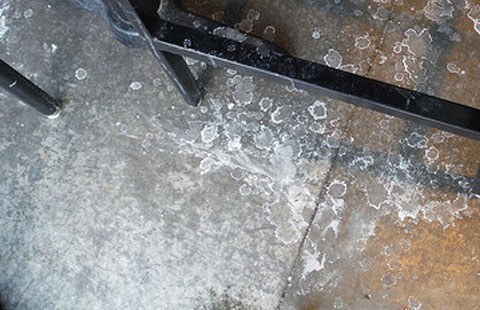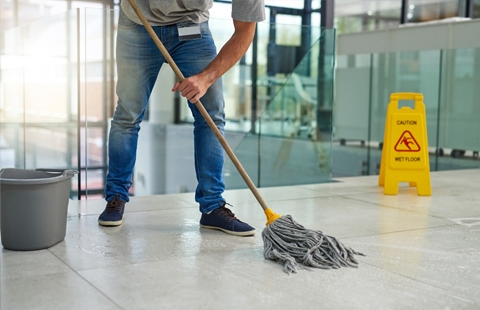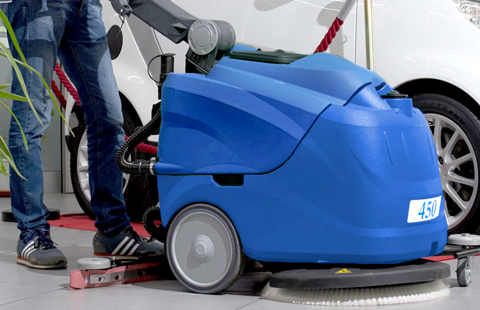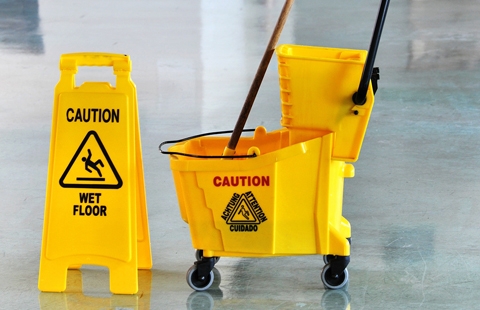Floor Care Tips
You only get one chance at a first impression. Walking into a health care facility, office, or retail store, what is one of the first things you notice? The floors! Are they clean, clear of debris and scuff marks, or are they dirty and dingy? Floor care is often overlooked but the impact it has on customers and clients is immeasurable.
Safety First
Safety is very important during floor maintenance, for both the person doing the cleaning and especially for people walking in the area being cleaned. Slips and falls can happen in a second and can be very dangerous, causing broken bones, head injuries or worse. The proper use of floor signs as well as following correct cleaning procedures can reduce the risks of injury.
Proper Use of Chemicals
The improper use of cleaners and strippers may damage floors. Frequent treatment or inadequate rinsing may cause cracking, shrinking and/or discoloration. Always read the label and SDS instructions prior to use.
Water
Using the correct temperature of water, cold to room temperature, has a large impact on the outcome of the cleaning process. Follow all directions on labels and SDS carefully to avoid any problems.
Heel Marks
Black heel marks can be removed using a fine nylon pad moistened with a neutral pH detergent. Rinse thoroughly with a clean cloth and water.
Gum, Tape and Other Sticky Residues
Sticky residue can be removed with a smooth, plastic putty knife and Doodle Buster. Rinse with a damp cloth after application of product.
Proper Use of Equipment
Keep all equipment clean and in good repair. Wash and rinse mops, pads, applicators, brushes and power cords after each use. Use a dedicated mop for each procedure. Proper use of equipment will help prolong its life, reduce maintenance needs and help ensure a clean floor after every task.

The key to correct floor care is knowing the type of floor you will be caring for. Many floors can be ruined by applying an inappropriate product. Floors are divided in two categories: non-resilient and resilient.
Non-Resilient Floors
This flooring material is hard and has no give, it does not flex or spring when walked on. Examples of non-resilient flooring are: ceramic tiles, marble, slate, terrazzo, concrete, porcelain, quarry tiles and onyx.
Resilient Floors
This flooring material is firm, yet has a “give” or “bounce back.” It will flex without cracking, meaning the floor has some amount of cushioning when a load is placed upon it. However, carpeting is not resilient flooring because it has “give” but is not firm. Examples of resilient flooring are vinyl tiles, asphalt tiles, rubber, linoleum, wood, cork, laminate and poured synthetic resin.

Floor Stripping
When stripping finish from a floor, a high pH solution is used. This process leaves a high pH (alkaline) residue on the floor and leaves the floor with a high pH. The floor must be neutralized using an acid based neutralizer to bring the pH closer to neutral (7). Ideally the pH of the floor should match the pH of the sealer or finish to be applied.





